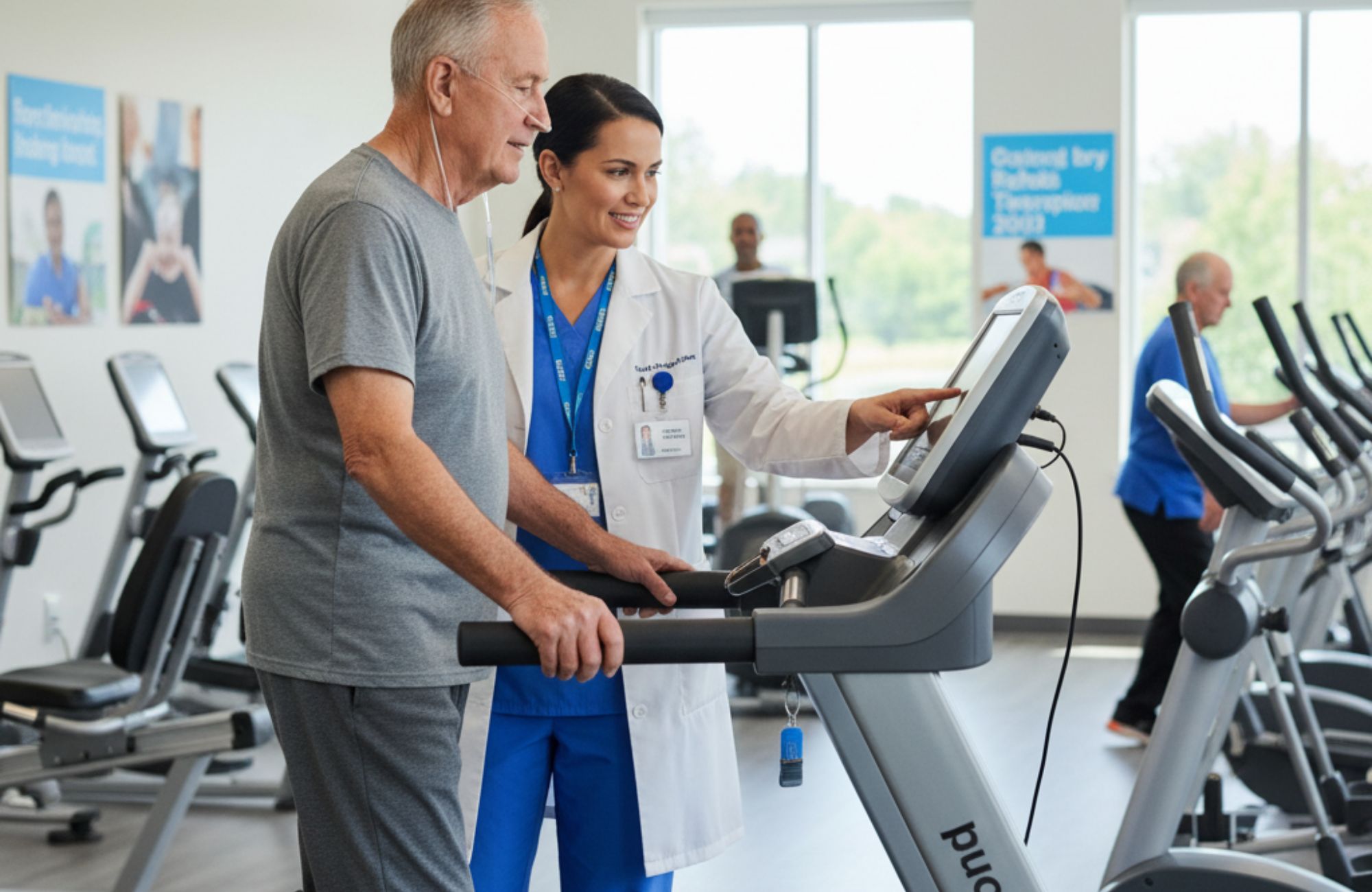


Pulmonary rehabilitation is a structured program designed for people with chronic respiratory diseases such as chronic obstructive pulmonary disease (COPD), interstitial lung disease, and pulmonary hypertension. Within the scope of practice pulmonary rehab respiratory therapist, these clinicians deliver interventions that improve exercise capacity, health status, and quality of life while lowering hospital admissions and mortality risk.
Respiratory therapists are part of a multidisciplinary team that includes physicians, nurses, physical therapists, dietitians, and other specialists. Their expertise makes pulmonary rehabilitation an essential component of integrated care across the health care system.
Respiratory therapists deliver respiratory care and respiratory therapy services to adult patients and, when appropriate, children and premature infants. Their practice includes:
The PR pathway often begins with initial pulmonary rehabilitation after referral. Therapists assess risk factors and disease severity, develop exercise and education plans, and track outcomes. Patients may continue into supervised maintenance pulmonary rehabilitation, which helps preserve gains made during the initial program.
Pulmonary rehabilitation addresses a wide range of respiratory disease groups:
Many patients benefit, but evidence shows few pr receive PR, especially those with undiagnosed COPD. Increasing referral rates can improve public health outcomes. Need licensed respiratory therapists to support patients with COPD, interstitial lung disease, or pulmonary hypertension? Learn more about our respiratory therapist staffing solutions.
Respiratory therapists are directly involved in patient assessment during pulmonary rehabilitation. They carry out pulmonary function tests to check lung function and establish a baseline for care. Therapists also use field tests such as the incremental shuttle walk distance to measure exercise capacity. Symptom scales help track breathlessness, fatigue, and emotional function, which gives the team a clear picture of each patient’s health status.
Assessment also includes safety checks to lower the chance of adverse events during exercise. By combining test results with daily observations, therapists can monitor progress and adjust therapeutic procedures as needed. These measures help demonstrate that pulmonary rehabilitation leads to significant improvement in patients compared with a control group that only receives usual care.
Therapeutic procedures in pulmonary rehabilitation cover structured exercise, education, and clinical support that guide patients through recovery and long-term management.
PR programs emphasize:
Therapists provide self-management education covering inhaler technique, oxygen therapy, and daily activity planning. Programs also confer social support through peer support groups, which improve adherence and reduce isolation.
PR therapists often manage patients leaving critical care, bridging the gap between acute treatment and long-term rehab. They also deliver care in outpatient settings, community programs, and center-based pulmonary rehabilitation facilities.
Flagstar Rehab connects hospitals and rehab programs with skilled respiratory therapists trained in pulmonary rehabilitation. Explore our respiratory therapist staffing services
Evidence and clinical guidelines provide clear direction on when to offer pulmonary rehabilitation and highlight the measurable outcomes patients can achieve.
The American Thoracic Society and European Respiratory Society recommend that clinicians offer pulmonary rehabilitation to patients with stable COPD, after COPD exacerbation, and for those with chronic lung disease such as interstitial lung disease and pulmonary hypertension.
Research from clinical trials and systematic review data confirms that pulmonary rehabilitation produces measurable results for patients with chronic respiratory diseases. Programs consistently show significant improvement in exercise capacity, including longer distances achieved in field tests such as the incremental shuttle walk distance.
Pulmonary rehabilitation also improves health-related quality scores by reducing symptoms, supporting better daily function, and addressing emotional function. Evidence further shows that participation lowers hospital admissions and decreases mortality risk for patients with stable COPD, post-COPD exacerbation, and other chronic lung conditions. These outcomes highlight why pulmonary rehabilitation is a proven, effective service that many patients should receive as part of usual care.
| Intervention | Target Symptom | Measure | Expected Change |
|---|---|---|---|
| Exercise training | Dyspnea, fatigue | Incremental shuttle walk distance | Increased distance |
| Respiratory muscle training | Ventilatory weakness | Max inspiratory pressure | Improved strength |
| Breathing exercises | Breathlessness | Dyspnea scales | Reduced scores |
| Self-management education | Limited knowledge | Patient-reported confidence | Higher adherence |
Evidence quality is rated as moderate quality evidence in most trials, but findings are consistent across many patients who undertook PR compared with a control group.
Respiratory therapists identify adult patients who can benefit, including those with severe disease or mild symptoms. Programs are most effective when pr initiated soon after hospital discharge for a COPD exacerbation or when offered early for stable COPD. Expanding referral practices can reduce the number of patients who miss out on PR.
Staffing and professional standards define the training, qualifications, and team roles that support safe and effective pulmonary rehabilitation.
Most respiratory therapists enter practice with an associate degree, but a bachelor’s degree is increasingly common. All must pass board exams and complete continuing education every five years.
In PR, therapists are part of a multidisciplinary team. Collaboration with physicians, physical therapists, psychologists, and social workers ensures programs address both medical needs and social determinants of health.
Pulmonary rehabilitation programs are delivered in outpatient settings and center-based pulmonary rehabilitation facilities. Each program is structured to provide consistent care, beginning with intake and continuing through follow-up appointments. Scheduling systems help organize initial pulmonary rehabilitation and ongoing visits, allowing therapists to monitor progress and adjust plans as needed.
Programs also include protocols to respond to emergencies and reduce the risk of adverse events during exercise or treatment. Therapists document important outcomes such as changes in exercise capacity and health status, which are often required for payer reporting. Community outreach is another focus, with efforts aimed at reducing barriers to care, especially for patients who may face challenges with transportation or access to local services.
Respiratory therapists adapt care for patients with complex conditions:
Pulmonary rehabilitation programs track both clinical and patient-reported outcomes to show the value of therapy. Gains in exercise capacity are measured through tools such as the incremental shuttle walk distance, which helps determine how well patients can tolerate daily activity. These improvements are closely linked to a better quality of life.
Programs also document reductions in hospital admissions and emergency department visits. Many patients maintain progress with supervised maintenance pulmonary rehabilitation, which helps extend the benefits achieved in the initial program. Safety is another focus, with continuous monitoring for adverse events to protect patients while they participate in exercise and education sessions.
The scope of practice pulmonary rehab respiratory therapist extends across diagnostics, therapeutic interventions, and education. By supporting patients with chronic lung disease, therapists reduce the burden on the health care system, improve health-related quality, and empower adult patients to manage their conditions more effectively. Pulmonary rehabilitation is underused, yet it offers measurable, important outcomes. Expanding access and supporting respiratory therapists through staffing solutions and ongoing continuing education can strengthen care for many patients with respiratory disease.
If you’re looking to hire an experienced respiratory therapist or are seeking your next career opportunity, Flagstar Rehab can help. We connect healthcare facilities with licensed professionals trained in pulmonary rehabilitation and support therapists in finding the right placements. Visit our respiratory therapist staffing page to learn more about our services or explore current openings.
In pulmonary rehabilitation, respiratory therapists design and deliver exercise training, breathing exercises, and respiratory muscle training. They run pulmonary function tests, monitor lung function, and lead self-management education sessions to educate patients about breathing disorders and treatment. Their role within a multidisciplinary team improves quality of life, reduces hospital admissions, and supports safe progress for patients with chronic lung disease and chronic obstructive pulmonary disease (COPD).
The scope of practice pulmonary rehab respiratory therapist covers patient assessment, diagnostic testing, and delivery of therapeutic procedures. This includes managing oxygen therapy, mechanical ventilation, airway clearance, and pulmonary rehabilitation programs. Therapists work across care settings such as critical care, outpatient settings, and center-based pulmonary rehabilitation. They also provide self-management education and contribute to public and professional education on respiratory care.
Pulmonary rehabilitation is a structured program that combines exercise training, breathing exercises, education, and support to improve outcomes for patients with chronic respiratory diseases. Respiratory therapy is the broader clinical field that includes critical care, diagnostics, and management of lung disease across settings from the ICU to outpatient care. Pulmonary rehab is one service delivered within the larger practice of respiratory therapy.
RCP, or Respiratory Care Practitioner, is another term often used for an RT, or Respiratory Therapist. Both describe licensed professionals who deliver respiratory care, including pulmonary rehabilitation, diagnostics, and therapeutic procedures for patients with chronic lung disease and breathing disorders. The specific title may vary by state or licensing body, but the responsibilities overlap.